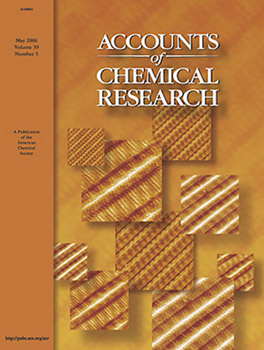| |
Control the self-organization and self-assembly of absorbates on surfaces is of wide interest in chemistry, physics and material science, especially for obtaining nanometer-size molecular electronic devices such as molecular wires, switches and so on. Scanning tunneling microscopy (STM) provides a powerful tool for probing the structure of these molecular architectures with single molecule resolution. This account summarizes recent work on the control and fabrication of self-organized molecular adlayers on solid substrates by STM. These examples illustrate different means to template surfaces: 1) crystallization with molecular hosts, 2) cocrystallization with charged polymers, and 3) controllable surface structure by UV-light and electrode potential. These results demonstrate that molecules, under appropriate conditions, will self-organize into well-ordered monolayers on various solid surfaces, and that these molecular nanoarchitectures can be controlled by external stimuli such as electrode potential and UV-light.
Acc. Chem. Res. (2006, 39, 334-342)

, |
|
